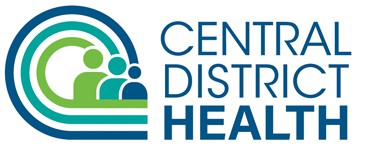Summary
Gonorrhea and syphilis rates remain high across the Treasure Valley. CDHD urges providers to continue to assess risk, discuss risk reduction strategies, and test patients for STDs including gonorrhea and syphilis.
Gonorrhea Update
Since 2014, gonorrhea rates have been increasing throughout the Pacific Northwest. Between January and June 2016, 150 cases of gonorrhea were reported to CDHD. In comparison, just 17 cases were reported during the same timeframe in 2013.
Testing
Common anatomical sites of infection include the cervix, urethra, rectum, and pharynx. CDHD urges providers to take a comprehensive sexual history to determine risk and perform testing on all potential sites of exposure.
Treatment and Prevention
Due to antibiotic resistance concerns, dual antibiotic therapy continues to be recommended. For uncomplicated infections of the cervix, urethra, rectum, and pharynx the recommended regimen remains: Ceftriaxone 250mg IM in a single dose PLUS Azithromycin 1g orally in a single dose.
Recent sex partners (i.e., within 60 days preceding onset of symptoms or diagnosis) should receive presumptive dual treatment with Ceftriaxone 250mg IM in a single dose plus Azithromycin 1g orally in a single dose in addition to evaluation and testing.
Syphilis Update
Syphilis continues to be a concern. In 2015 and 2016, 113 cases have been identified related to an ongoing local outbreak. Men who have sex with men (MSM) have been the highest risk group, although methamphetamine or other drug use and incarceration in the past year have been risk factors among recent male and female cases.
Testing
Approximately half of the syphilis infections reported to CDHD in 2016 resulted from routine screening. Screening is recommended for asymptomatic adults and adolescents at risk of infection. MSM and persons living with HIV may benefit screening every three months.
Please consider syphilis if a patient presents with:
- Any ano/genital or oral lesion, especially indurated and minimally painful ulcers
- Any unexplained rash, especially with palmar or plantar involvement
- Unexplained lymphadenopathy
- Unexplained ocular disease (i.e., uveitis, panuveitis, diminished visual acuity, blindness, optic neuropathy, interstitial keratitis, anterior uveitis, retinal vasculitis)
Testing for syphilis should include both nontreponemal (e.g., RPR or VDRL with titer) and treponemal (e.g., TPPA, FTA-Abs, EIA, CIA) methods.
Treatment and Prevention
Consider presumptive treatment if a patient is symptomatic, is a contact to a syphilis case, belongs to a high-risk group, or if follow-up is uncertain. Use single dose benzathine penicillin G (e.g., Bicillin-LA), 2.4 million units IM as first-line therapy.
Considerations for Pregnant Women
Providers should continue to screen all women serologically for syphilis early in pregnancy, preferably at the first pregnancy-related visit. Additional serological testing should be performed at 28-32 weeks gestation and again at delivery if a woman reports having multiple sex partners, has been diagnosed with a sexually transmitted infection or has a sex partner diagnosed with syphilis. Any woman who has a fetal death after 20 weeks gestation should be tested for syphilis, even if screening was performed early in pregnancy.
Additional Resources
For more information call the Communicable Disease Program at 208-327-8625.
For the US Preventive Services Task Force syphilis screening recommendation:
http://www.uspreventiveservicestaskforce.org/Page/Document/RecommendationStatem entFinal/syphilis-infection-in-nonpregnant-adults-and-adolescents .
For a compact reference to STD screening recommendations by disease and risk group go to http://www.cdc.gov/std/tg2015/screening-recommendations.htm.
For STD treatment guidelines go to https://www.cdc.gov/std/tg2015/ .
#####
XXXXX AUGUST 2016

